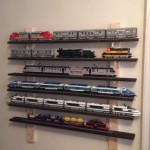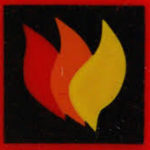Home › Forums › All Things LEGO! › MILS
- This topic has 7 replies, 7 voices, and was last updated 4 years, 3 months ago by
 Will McDine.
Will McDine.
-
AuthorPosts
-
April 22, 2015 at 10:14 am #11345
 MatthewParticipant
MatthewParticipantSo as im looking to the future of LEGO display planning and professionalism… I want to cover the MILS topic and get a Steel City LUG standard going.
First roads:
Are we going to use all black as our road standard? I think it looks sleek and great, but the downfall to the black is that once you start to scratch it up and move it from show to show, it loses its luster and looks bad.
On the YouTubeZ i saw a guy doing his own MILS personal layout, using Dark bluish gray. It looks very sleek and realistic. Plus his design for an island and turning lane is very nice.Here is the link- https://www.youtube.com/watch?v=rDzIEMxKr5k
Here is the detailed video- https://www.youtube.com/watch?v=D46BTRmRqjkVery Nice items he MOC’d. What are your thoughts?
Next is the Tack…
Well i don’t really know how to start this one because Ive seem so many variations of MILS track. Also with what i see in our own MILS standard is to fill the base plate up with brick and encase the track in brick. As a train guy i can help but cringe at that because thats not how rails are in the real world, and if we are trying to make buildings and cars and trains look real and MOC them to realistic standards i feel we need to be uniform across the board.
So what i have is the PENN LUG style MILS standard on the mind, they wend about MILS’ing their track in a more realistic way. Maybe their MILS track is not the best looking but it can vary between LUS’s of course. Keep in mind that their way of MILS is actually cheaper. Now i know if we are going for the one brick high standard, yes it’ll cost more to raise the trains up off our existing one brick high. Plus doing the curves would be easier to MILS thanks to 1×1 round studs and jumper plates…
So what do you think?
In the end please remember i mean no offense to existing MILS standards some of you have already adopted. Yes im still new to the LUG and should not be barking orders and im not. I just want to be taken seriously and not written off as “Matt we do it this way only and thats it”
Oh and TIM i do like your black roads, it still can be used as “NEWLY PAVED” road in the city. adding construction crews and steam rollers would be cool.
April 30, 2015 at 10:02 pm #11457 DanParticipant
DanParticipant@matthew-jeffory I’m not much of a town guy, but I think this thread may be in the same vein: http://www.steelcitylug.com/forum/topic/standards-tutorials-and-information-thread/
May 1, 2015 at 1:55 am #11462 Benjamin C GoodParticipant
Benjamin C GoodParticipantThis looks like a separate topic to me. I see the standards thread as a place for posting links for relevant resources, but not the place to clog up the thread by discussing them in detail.
I have some responses to Matthew’s post but some of it will have to wait til next week. For now I’ll point out that train track ballasting and MILS are two separate things. In the thread that Dan linked to, the MILS link is the first one that Evan links to, you definitely wanna check that one out. The purpose of MILS – which seems to have gotten lost in the discussions around here – is for landscaping the display and connecting the sections accordingly. You can MILS without train track (I plan to do it for both castle and space) and you can have train track without MILS (plenty of LUGS do it).
January 17, 2020 at 5:43 pm #35211 JoshKeymaster
JoshKeymasterbringing this thread back to life without back reading. just saw this video and thought I’d show how awesome the details of a brick built road could be…
January 18, 2020 at 4:14 am #35222 Will McDineParticipant
Will McDineParticipantI agree that video is the direction the LUG should be going for and that we most definitely can achieve if we just pick a standard and commit to it. The one thing I don’t really think we need to do that this video does is a layer of brick under the road and 2 layers of brick under the sidewalks/buildings. The only time that is beneficial is if you are doing wired things such as the street lights that they have. Those things are nice but they are very time consuming and very costly.
January 18, 2020 at 7:03 am #35224 Greg SchubertParticipant
Greg SchubertParticipantjust saw this video
That’s a very cool video with lots of great buildings.
I like how he says they are driving on the “right” side of the road and means “left” side.
January 20, 2020 at 12:40 pm #35265 Rich MillichParticipant
Rich MillichParticipantI’ve been giving a lot of thought to MILS, and here are my new thoughts:
* We have existing members, myself included, who have invested in differing kinds of existing road plates, and in different lane widths. The lack of standard, brick build road and otherwise, is actually a plus, as, well, cities have neighborhoods. Each roadplate standard can be used in an area to denote that neighborhood. Boulevards, avenues, streets and alleys can all have different widths and different surface looks. Also, the surrounding curbs, streetlights, and signage are a real package deal with the road surface itself, and I think, designwise, it should be treated that way. I think we can use creative differences to our advantage.
The only places where this matters is at the junctions between the different types of roadplate, train track, or brick built road that exist. These are all building solutions that might take maybe a weekend to solve for any particular transition, and can then be used forever. I am not a fan of expecting members to re-invest in the building of brick built roads any more than I would expect members or the LUG to invest in DBG roadplates, and, as other displays have proven, any road standard can look good, whether black like asphalt or LBG like concrete. Curbs, sidewalks, streetlights and signage, both pedestrian and traffic, go a long, long way toward the final neighborhood style, and in the more elegant cases, they define it.
* MILS now gets a LOT more interesting if we buy smaller baseplates AND start building landscape vertically. At that point, two things happen.
The connection points on the smaller baseplates need to be there on the larger ones so that all LUG MILS plates are modular, regardless of size. This also gives us the ability to rearrange larger displays to fit odd shaped spaces better. This is in combination with any other LUG we meet.
The second thing I’m concerned with is stud drift. As a building grows taller, especially with one brick thick walls and pay features that allow for the removal of floors for play, the studs drift off axis the higher you go. With landscaping, that’s far less of a problem if the superstructure is torsion resistant, but I feel that it’s still likely for any vertical construction to drift the higher it gets because of the tolerance that individual bricks have. @dc221803 (Doug Cloud) ran into that problem building his IKEA store, and I never forgot that lesson. Therefore, we might want to plan for connections between builds that are higher up, at least among ourselves, or some spacing at corners. There, we can connect and remove brick inserts at outer surfaces at predetermined heights where our builds go right to the edge. This isn’t necessary for modulars, as most buildings can drift along each other, but with anything else that isn’t built to interlock already but that we want to be integrated, especially landscape, height creates drift that we will need to control.
* Third is that MILS doesn’t need to cover the entire baseplate at all. For connection and rigidity purposes, I’ve found that only a 2-4 stud thick ring around the edges is necessary. At that point, every other stud, the vast majority of a baseplate, is in play right down to the baseplate. Maximum creativity AND minimum brick cost.
For transsport of roadplates that bear MILS, inserts can connect over the smooth parts to get that 2 stud ring. After getting the MILS’d plates to their location, take the inserts out, and then there’s room to link up whatever transitions we need.
When landscaping, in my experience, much more integrated brick work is a good idea around the edges. This is because, on the edges, the slope of the hillside cuts in a cross section on the edge, and it’s less structurally sound there.
Thinking ahead, we may need a vertical standard for connection points like we did for the cubes at Dig Into Reading, if I recall right. I cringe at a road standard, because it also eliminates the use of expensive roadplates that new members may be bringing with them in their collections.
* We are not in competition with other LUGs’ displays or standards. Sorry, we’re not, and that’s a good thing, because we can choose to do better. MILS was designed to interact multiple LUGs’ displays together for stability. This means that only the edges of our display matter in this case, both for interaction and in presentation on the edges that face our audience. On the interior, we can do whatever we want, wherever we want. MILSing the edges is the functional minimum for doing that, and there are cases (large bidies of water) where MILS might not be the best answer structurally.
Any decision we make now has far reaching and expensive effects, one way or another. I think we need to think flexibly in order to make best and coolest looking use of the resources we already have rather than chase someone else’s standard.
January 25, 2020 at 12:23 am #35390 Will McDineParticipant
Will McDineParticipant@joshhall in the LUGbulk sheet you brought up about the cost option for building brick built roads. I ran some numbers and came up with the following numbers.
I can’t remember for sure how many 1×4 bricks are used in the plates I’ve made, I know it’s between 100-120. I’ve ran numbers using the larger just for the sake of being thorough. Anyways, here’s the math:
Black 1×4 brick- 120 Bricks Per Plate, $0.03
0.03×120= $3.60 Per Road PlateBlack 1×8 brick- 60 Bricks Per Plate, $0.07
0.07×60= $4.20 Per Road PlateBlack 1×16 brick- 30 Bricks Per Plate, $0.17
0.17×30= $5.10 Per Road PlateI did the bricks in multiples of 8 just to keep the math simple but as you can see the 1×4 bricks are the cheapest route as far as lowering the overall cost per road plate.
-
AuthorPosts
- You must be logged in to reply to this topic.
